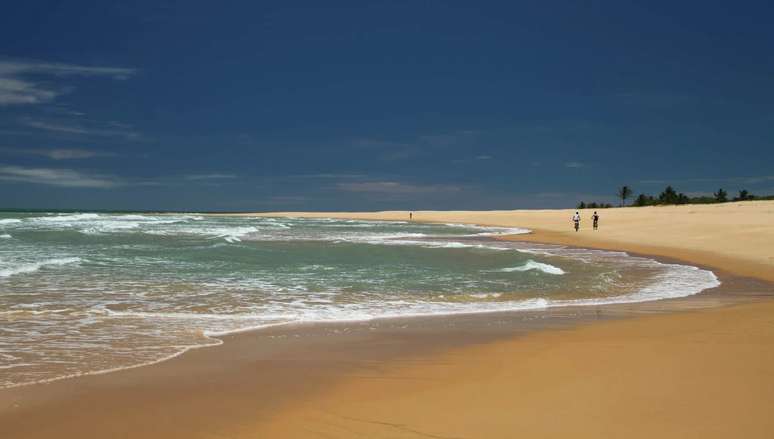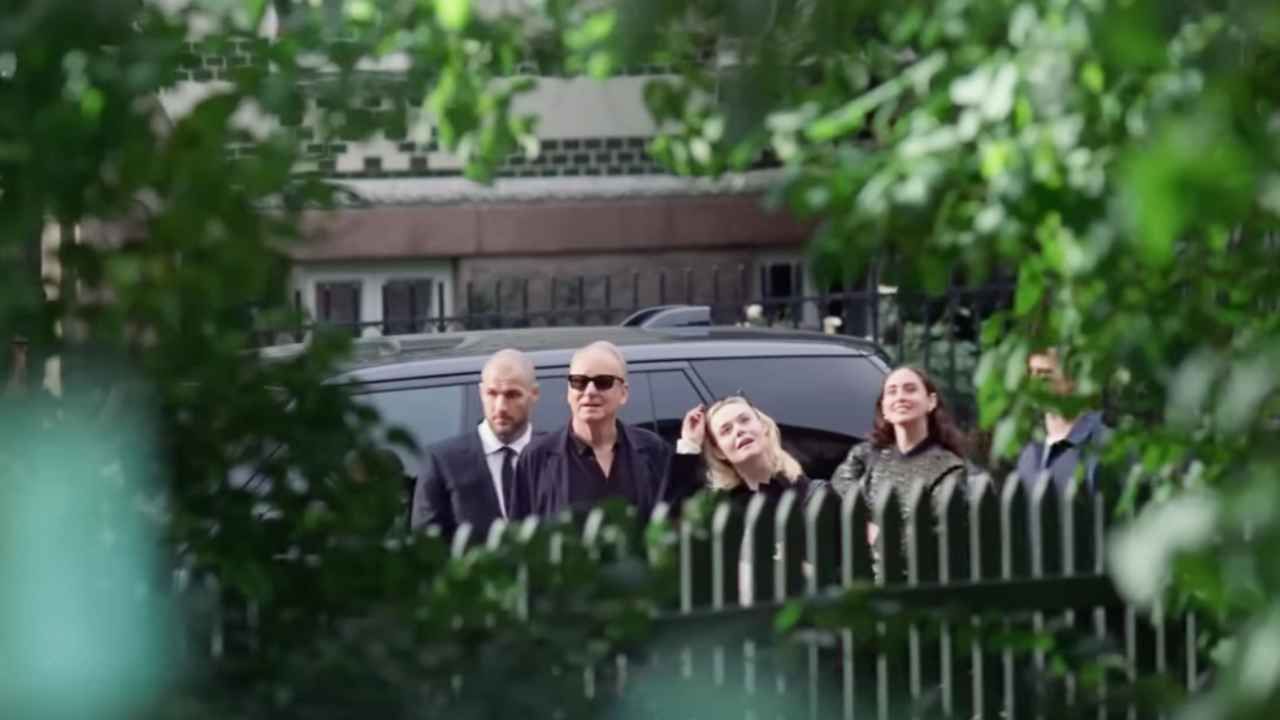The itinerary goes from Porto Seguro to the Caraíva district […]
At the top of the Quadrado, life flows at its usual pace. But, at sea level, Trancoso shows the most isolated and unknown version of him.
It is on the beaches of the southern coast of Bahia, where cars do not enter and bathers arrive only with a certain amount of difficulty, that the bicycle crossings between Porto Seguro and Caraíva take place, a journey of almost 50 kilometres, carried out on two wheels and combined with a path, in the final stretch.
Expect to find expansive stretches of sand where you and your guide will be the only ones, natural pools emerging right at the edge of the beach, cliffs rising above our heads and a host of other scenery that can only be seen by those who get there on foot or by car. bicycle.
Below, you can discover two exclusive itineraries aboard a thin boat (between Porto Seguro and Trancoso, and another from there to Praia da Espelho), and an 11-kilometer walk, between Espelho and Caraíva.
Southern coast of Bahia
⇒ Porto Seguro – Trancoso (18.1 km)
The crossing begins in Porto Seguro, the nerve center of the southern coast of Bahia which has exchanged the serenity of its calm waters for getting drunk on the road that has become a boardwalk, and continues to Caraíva, almost 50 kilometers later.
After crossing the Buranhém River by ferry to Arraial d’Ajuda, cyclists continue along the packed sand of Apaga-Fogo Beach.
In this first stage, six kilometers long, travelers also pass by the beaches of Araçaípe, Delegado, dos Pescadores, Mucugê, Pitinga and Taípe, all in Arraial d’Ajuda.
The altitude variations are limited and the terrain is made up of compact sand, which makes the route much easier, especially when the right winds give a little push.
This stretch is also marked by long coral reefs that enclose warm waters, in natural pools, and a sea of weak waves and vegetation with almond and coconut trees, whose shadows act as a refuge during hours of strong sunshine.
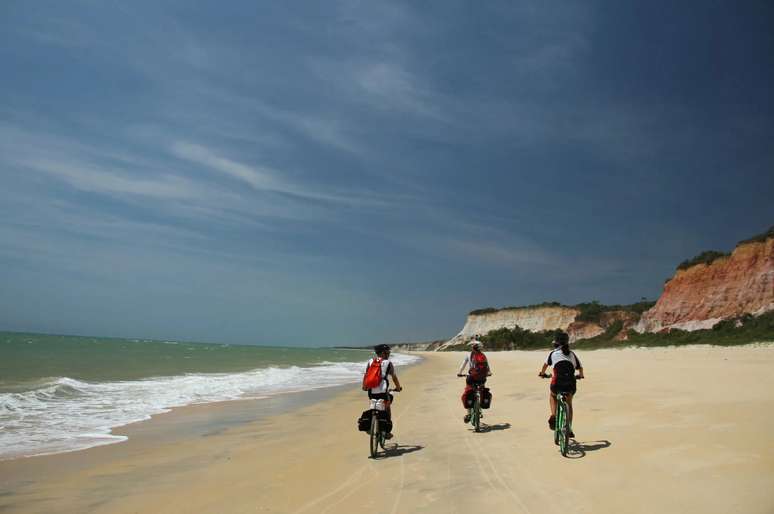
From Pitinga the journey takes on wilder scenarios, characterized by compact sand, natural pools of warm water and strong waves that crash on the cliffs that border the coast.
It is there that the cliffs are cut by stretches of Atlantic Forest that blend into those walls with shades ranging from light to orange.
And when the body begins to show signs of tiredness, under the sun from the most advanced position of the day and the sand which sometimes slows down the wheels, the beach of Rio da Barra, on the border with Trancoso, welcomes tired cyclists with the mouth from which takes its name from the place, whose waters constantly reshape the strips of sand and the beaches, cannot be reached by car.
Hard sand lined with coconut trees continues to aid cycling and sophisticated (and expensive) Trancoso is painting at the bottom of the beach, the first destination of which is Praia dos Nativos, closest to the village.
After almost 20 kilometers of pedaling and 2h16 in constant movement, the cyclists take the dirt road that crosses the Trancoso river on a rustic wooden bridge and continue uphill to Quadrado, the famous square (rectangular, let’s remember) with the main attractions of this neighborhood of the municipality of Porto Seguro, like the church of São João Batista, the local patron saint.
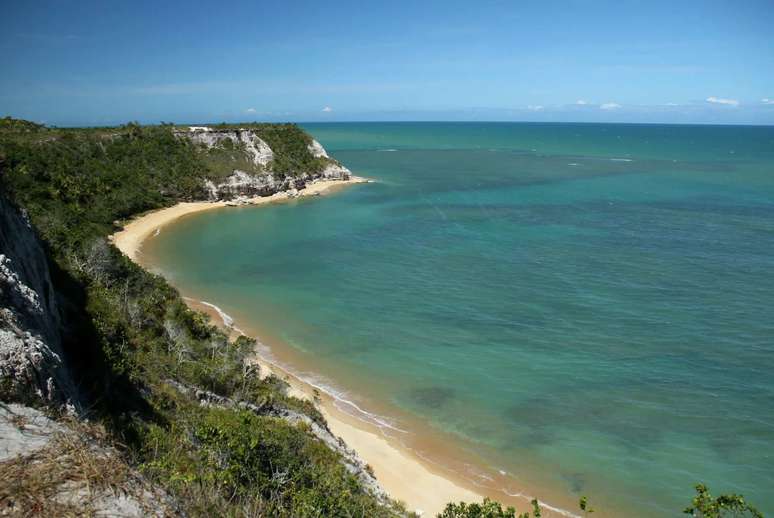
⇒ Trancoso – Praia do Espelho (20.6 km)
The bicycle trip along the southern coast of Bahia follows an ascending itinerary, starting at the more urban beaches and continuing through isolated areas, between Trancoso and Praia do Espelho.
The second day is hard and requires concentration to pedal on soft and sandy terrain, cross rivers and large stretches of beach (almost) without shade and push the bike in moments of stubborn nature.
But all the effort will be rewarded by warm water bays, coral reefs on the seafront and a feeling of exclusivity that few can experience.
This stage begins with a bucolic crossing on a wooden bridge over a mangrove that gives access to Praia dos Coqueiros, the closest strip of sand to Trancoso.
From then on the feeling of being the only one grows, as the cyclist progresses southwards and crosses long stretches of beaches with natural pools and almost all without access to cars, such as Itapororoca and Itaquena, the latter located in an area protected area. , known as the Rio dos Frades Wildlife Refuge.
The next stop is in Rio dos Frades, an isolated place, frequented only by local fishermen. Here you are, your skinny beach (which must be raised to cross the river that separates the next beach) and a scenic stretch of sand that requires a longer stop.
On high tide days, you need to rent one of the local residents’ boats to cross the river (and if you don’t know how to whistle loudly to call the fisherman on the other bank, bring a whistle with you).

Next, cyclists also pass Jacumã and Curuípe, whose exaggerated water tones offset the harshness of what is one of the busiest days of the entire three-day crossing along Bahia’s southern coast.
We are almost giving up on cycling under the strong sun and stretches of sand that seem to have no end, but the last destination of the second day is one of those places that make us throw the bike on the ground, take a deep breath and enjoy, paralysed, the most popular landscape of the itinerary: Praia do Espelho, imaginary name of Praia do Curuípe.
This exclusive part of the southern coast of Bahia is an easy figure in lists listing the best beaches in Brazil. And, to be convinced of this, just go up to one of the viewpoints overlooking that sea of different tones, cut out by the cliffs, or lie down on one of the cushions scattered on the local sandbanks (all of these require a usage fee) or minimum consumption) .
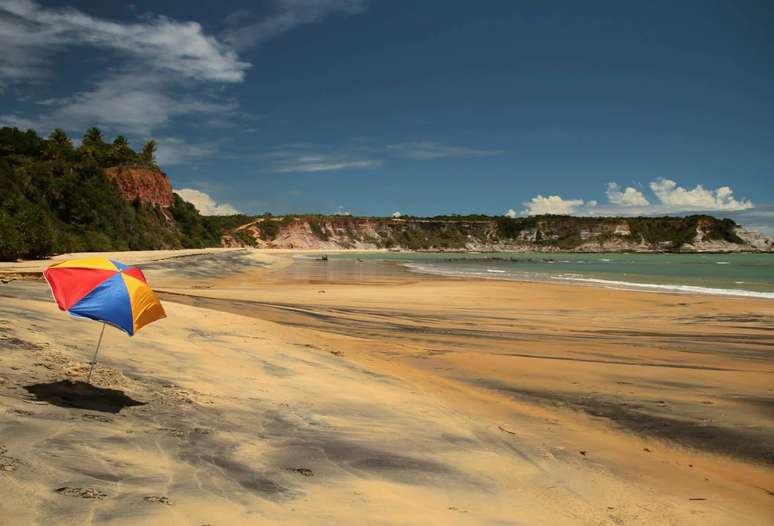
⇒ Praia do Espelho – Caraíva (11 km)
On the third and last day of the trip, the bikes give way to the walk that continues towards Caraíva, the most rustic and sandy version of the entire itinerary, where thin people are not always welcome, due to the sandy terrain and more unstable paths . indoors on uneven and steep terrain.
The selective sophistication of Praia do Espelho gives way to a wild setting that seems to date back to the time Cabral landed there in the 1500s.
In this stretch, the most isolated and evocative, cyclists cross Praia da Juacema, the Juacema river, Lagoa do Satu and Praia da Barra.
And he prepares to see everything again, as if it were the first time.
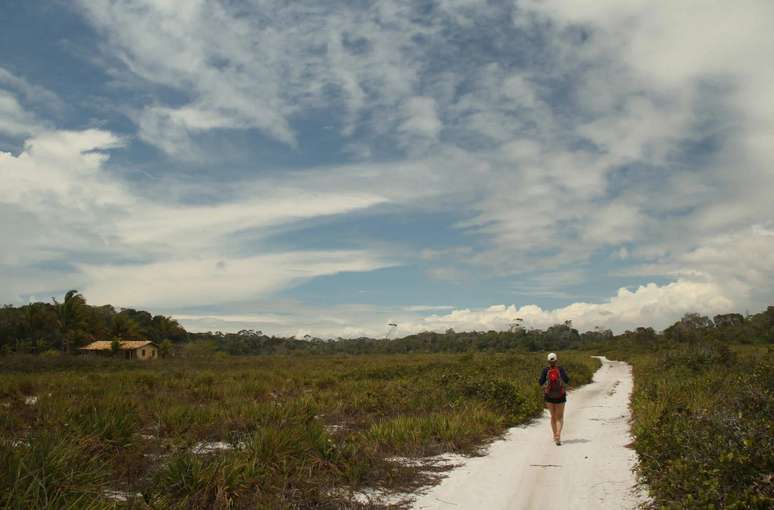
Long golden streaks, twisted coconut palms almost touching the sea, waters ranging from green to shades we can’t describe, shallow pools for swimming and nothing and no one else.
It is not always possible to swim in the sea, in those areas with open and rough seas, but Juacema and Lagoa do Satu act as a refuge for a snack on the path and for diving into fresh water.
Crossed by the river of the same name, the Caraíva neighborhood points downwards, isolated from other Bahian addresses that have embraced modern structures.
Despite the mass tourism that has threatened this ancient stronghold of alternative travellers, 120 km from Porto Seguro, it is Bahia that leaves us with no desire to return home, that invites us to stroll along the narrow sandy streets that run along the river and the colorful houses with simple facades follow.
Cars do not enter there, they must be parked in Nova Caraíva, on the other side of the river, and the transport managed by Pataxós still takes place on wooden canoes, on the backs of animals or on carts.
GET READY
– It doesn’t matter what month of the year it is to put the skinny in the sand. The most important thing is the phases of the Moon, such as Full and New, which guarantee greater expanses of sand for cycling.
– Be strict when cycling, as the tide tends to cover some sections of the beach at certain times of the day.
– Although it is difficult to have entire days of rain, the rainy season on the southern coast of Bahia usually runs from June to August.
– To participate in the cycling crossings it is not necessary to be a cyclist or athlete, but you must be in good physical shape, carry out physical activity frequently and be at least 15 years old.
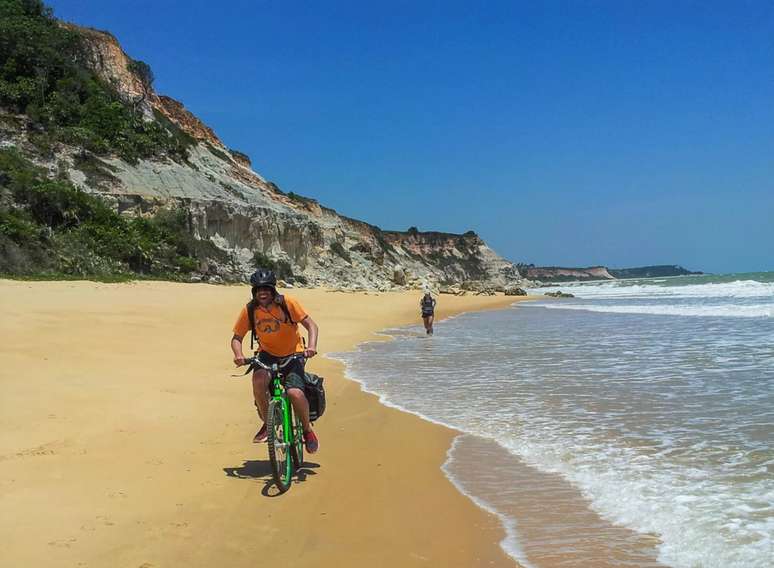
– Since it is not always possible to stay overnight at your hotel, bring a small backpack with a swimsuit, light clothing, sun cream, cap, repellent and personal hygiene items.
– The routes do not have support cars, due to the isolated beaches, but groups of at least two cyclists are accompanied by two guides.
– Reservations must be made up to 24 hours in advance and it is recommended to arrive in Porto Seguro the day before, as these routes start very early.
– Yes, it is safe to cycle on those isolated beaches, both in the more urbanized areas and in the areas where the security guards of the inns and residences keep watch.
LEARN MORE
The Bahia Active agency, specializing in cycle tourism and trekking, offers routes of different degrees of difficulty and distances along the Discovery Coast, the origin of Brazil’s history and declared a Natural Heritage Site by UNESCO.
The service includes individual insurance, transfers, cycle tourist driver, snacks on the route, water and isotonic drink, bicycle with helmet.
bahiaactive.com.br
Source: Terra
Ben Stock is a lifestyle journalist and author at Gossipify. He writes about topics such as health, wellness, travel, food and home decor. He provides practical advice and inspiration to improve well-being, keeps readers up to date with latest lifestyle news and trends, known for his engaging writing style, in-depth analysis and unique perspectives.

